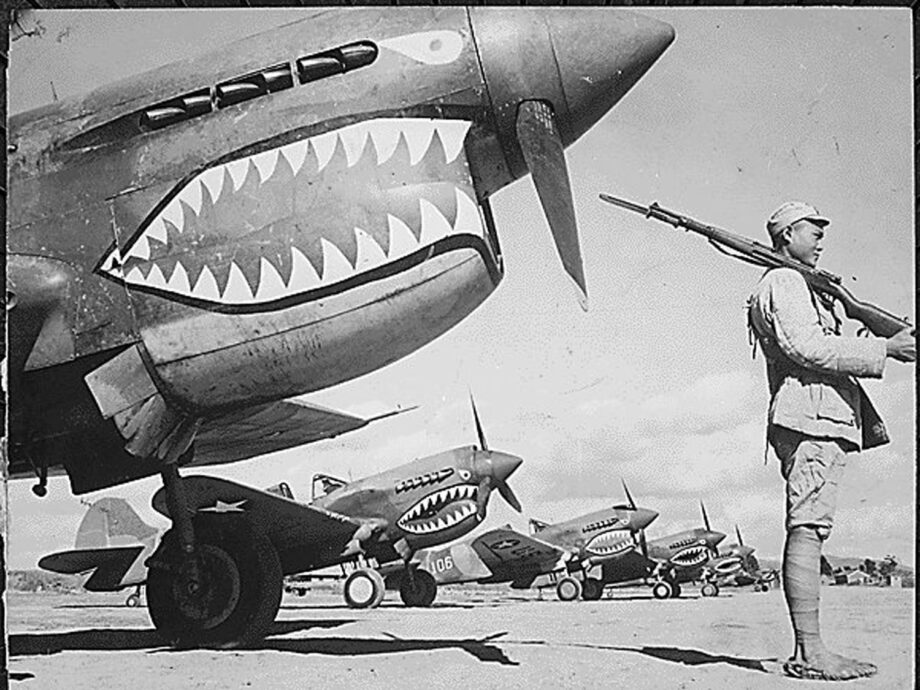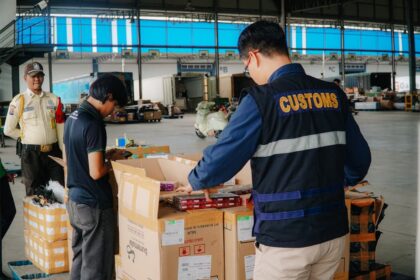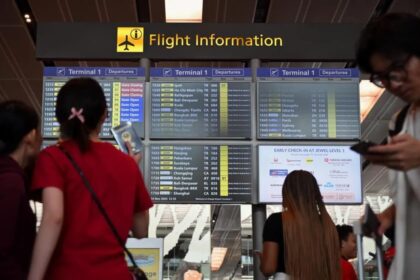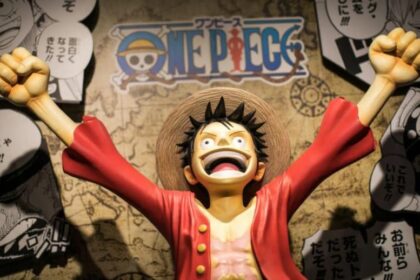A mercenary offer that changed a war
Imagine signing a one year contract to fly and fix fighter planes in wartime China for salaries far beyond U.S. military pay. In 1941, a small band of American pilots, mechanics, and crew did just that. Their contracts promised the kind of money that turns heads in any era, the equivalent of up to 16,725 dollars a month in 2025 dollars, housing, a 700 dollar monthly food allowance, and an 11,000 dollar bounty for every Japanese aircraft destroyed. They were civilians on paper, recruited to serve China while the United States was still neutral.
Those recruits formed the American Volunteer Group of the Chinese Air Force, soon known worldwide as the Flying Tigers. Their Curtiss P 40 fighters, painted with a shark’s teeth grin, became icons. Their record in the air made headlines at home and gave China breathing room during a desperate phase of the war against Imperial Japan.
Eight decades later, the Flying Tigers still carry weight far beyond aviation history. Chinese institutions host museums and memorials to their service, and descendants of their commander, Claire Lee Chennault, have been invited to major commemorations in Beijing. The wartime alliance forged between Americans in the AVG and Chinese soldiers and civilians remains a rare point of shared pride amid a strained relationship.
China’s state media has often described that bond as lasting and heartfelt. On its memorial page, People’s Daily, the state run newspaper, captured the sentiment.
China always remembers the contribution and sacrifice made to it by the United States and the American people during the World War II.
Why China needed help in the skies
The war between China and Japan erupted in 1937, years before the attack on Pearl Harbor. Japanese forces seized territory and used air power to pound Chinese cities. The Chinese Nationalist government under Chiang Kai shek lacked a modern air arm that could contest the skies. Amid that crisis, Chiang hired an American veteran of the U.S. Army Air Corps, Claire Lee Chennault, first as an aviation adviser and later as the organizer of an air defense.
Chennault spent years laying the groundwork. He helped build an air raid warning network that linked observers across vast areas of China. He oversaw the construction of forward airfields, many of them carved out by hand by thousands of Chinese laborers. The United States remained neutral in this period, which meant any help had to be arranged quietly and legally.
When Soviet air units withdrew from China, the gap widened. In 1940, Chennault traveled to the United States to get planes and people. He secured access to 100 Curtiss P 40 fighters that had been slated for Britain, and he recruited American pilots and ground crew with Chinese funds that could pay several times what U.S. services offered. To navigate neutrality rules, volunteers resigned or took leaves from U.S. units and signed contracts with the Central Aircraft Manufacturing Company, a private firm working for China. They would wear Chinese insignia, operate from bases in China and Burma, and fight under Chennault’s command.
Recruiting the American Volunteer Group
The AVG brought together 99 pilots and about 200 support crew. Many came from the U.S. Army Air Corps, Navy, and Marine Corps. Some were fresh from flight school. Others had flown flying boats or ferried large bombers. A few joined for adventure. Quite a few saw the pay and the bounties as life changing. Marine aviator Gregory “Pappy” Boyington, who later became a Medal of Honor recipient with the Marine Corps, signed on while struggling with debt and family obligations, according to a U.S. Defense Department history.
On paper the AVG was equipped with solid fighters. In practice, the first P 40s were far from perfect. They reached China lacking a modern reflector gun sight, which forced pilots to improvise. In his memoirs, Chennault recalled the early days of gunnery practice.
They were aiming their guns through a crude, homemade, ring and post gun sight instead of the more accurate optical sights used by the Air Corps and the Royal Air Force.
Training in Burma and China was intense and dangerous. Three pilots died in early accidents. On a day remembered as “Circus Day,” eight P 40s were damaged on the ground and in rough landings. The unit had skill, but it needed discipline, tactics, and coordination.
The P 40 Warhawk, strengths and limits
Chennault taught his pilots to avoid turning dogfights against more nimble Japanese aircraft. The P 40 was rugged and fast in a dive. It carried heavy machine guns and could absorb punishment. The AVG would attack from altitude, strike in a swift diving pass, and then climb away to set up again. The goal was to hit hard, avoid low, twisting fights, and use the Chinese air raid warning network to be in position before enemy formations arrived.
Baptism of fire: Kunming and Rangoon
Combat came in the days after Pearl Harbor. On December 20, 1941, the AVG intercepted a Japanese bomber raid over Kunming. Accounts differ on the exact tally, but the Tigers knocked down multiple aircraft and lost one fighter that ran out of fuel and crash landed. Chennault, proud but exacting, told his men their first fight had been sloppy. A U.S. Defense Department history summarized his critique of that day’s chaotic gunnery.
They tried near impossible shots and agreed later that only luck had kept them from either colliding with each other or shooting each other down.
They learned fast. Within days, AVG squadrons redeployed to Rangoon, capital of British Burma, to defend a critical port that fed supplies onto the Burma Road and into China. Japanese bombers and fighters came in waves during the Christmas and New Year period. The Tigers tore into the formations, breaking up raids and lifting morale across the theater. The AVG’s own history credits the unit with downing 75 enemy aircraft around Rangoon in that first push, with modest losses.
The Rangoon campaign cemented the unit’s legend. The Tigers never fielded more than about two dozen P 40s at a time there, yet they battled a much larger foe for roughly ten weeks. Chennault later wrote of the scale of the contest and the toll on the enemy.
This tiny force met a total of a thousand odd Japanese aircraft over Southern Burma and Thailand. In 31 encounters they destroyed 217 enemy planes and probably destroyed 43.
Even success in the air could not turn back the ground war. Rangoon fell in March 1942 and the AVG pulled back into the interior. Their pressure still mattered. Every Japanese plane tied down over Burma was a plane not attacking India, not raiding deeper into China, and not shifting to other fronts.
What the numbers say
The AVG’s tally is one of the most debated statistics of the war in China. The group’s own claims and later U.S. accounts range widely. Wikipedia’s compiled history credits the Flying Tigers with destroying about 296 Japanese aircraft while losing 14 pilots in combat, a number close to a National Public Radio survey that cites 299 downed with 12 pilots lost in combat. Other reporting, including detailed features and museum summaries, puts the total as high as around 497 enemy aircraft destroyed with 73 total losses of all causes. Differences reflect whether figures include “probables,” aircraft destroyed on the ground, losses from accidents, and the fog of wartime record keeping on both sides.
Context helps explain the unit’s high kill ratio. The AVG enjoyed an early warning network that guided intercepts. Chennault’s boom and zoom tactics played to the P 40’s strengths. Early Japanese fighters often lacked armor protection and self sealing fuel tanks, which made them lethal in a turning fight yet vulnerable to heavy bursts from diving attackers.
Culture, myth, and morale
Shark mouth nose art had appeared earlier on German and British aircraft, and AVG pilots adapted it to their P 40s. It was aggressive, easy to paint, and perfect for photographs. Washington even asked Walt Disney’s studio to create a logo. Artists produced a winged Bengal tiger leaping through a stylized V for Victory. It never replaced the shark mouth on the airplanes, but it helped fix the Tigers in American pop culture. Hollywood followed quickly with a 1942 film, Flying Tigers, starring John Wayne, which gave U.S. audiences an early war story with American heroes who were already fighting in Asia.
The story on the ground was as powerful as the one in the air. Thousands of Chinese civilians built runways by hand. Villagers guided downed American pilots through mountains and rice paddies to safety, often at grave personal risk. In southern China, the East River Column, a local guerrilla force, helped move airmen out of occupied areas. Those rescues left lifelong memories on both sides of the Pacific.
Descendants often describe that bond in personal terms. At a recent photo exhibition in Guangzhou, Clifford Ray Long, whose father flew with the Tigers, tried to imagine what the elder Long would feel if he saw the tributes in China today.
He would be overwhelmed with emotion. He would probably be crying as I am, but he would also be so excited to be among the Chinese people.
That mix of grief and gratitude is common at Flying Tigers events, which have become spaces where Americans and Chinese share family stories and local histories. Exhibitions highlight missions over Yunnan and Burma, and they show how communities rallied around the shared task of keeping the supply lines open and saving airmen.
From volunteers to the U.S. Army Air Forces
As the United States mobilized after Pearl Harbor, Washington pushed to fold the AVG into regular service. Many Tigers wanted to return to their original branches, while others preferred to stay under Chinese contract. The Army warned that holdouts could be drafted as privates. On July 4, 1942, the AVG was officially disbanded. Chennault accepted a commission as a brigadier general in the U.S. Army, and the 23rd Fighter Group took up the mission in China under U.S. colors.
Appropriately, the AVG’s last fight came on the day it ceased to exist. Four P 40s engaged a dozen Japanese fighters over Hengyang, reportedly downing six without loss. The men who chose to stay formed the core of the new unit.
The 23rd Fighter Group became part of the 14th Air Force, which carried on in China for the rest of the war. Some AVG alumni, including Boyington, rejoined their earlier services. He later led Marine fighters in the Pacific and received the Medal of Honor.
Memory that bridges a rivalry
Remembrance has endured on both shores. In Guilin, the Flying Tiger Heritage Park stands on a wartime airfield where Chennault kept a command post in a limestone cave. In Hunan’s Zhijiang, a memorial museum preserves uniforms, maps, and rare color photographs. Much of the material in China’s galleries exists thanks to donors like Pedro Chan, a Chinese American collector who has placed tens of thousands of Flying Tigers artifacts with museums and libraries.
Across the Pacific, a major photo exhibition honoring the Flying Tigers is scheduled in Los Angeles, organized by the Sino American Aviation Heritage Foundation and partner groups. Curators have assembled more than 150 images from U.S. archives and private collections. Supporters stress that the history is shared. Elected officials have linked these stories to broader recognition of Chinese American service, including a law honoring roughly 20,000 Chinese American veterans of World War II. Foundation leaders say they have helped bring hundreds of veterans back to China over the years and have launched school programs that encourage American students to visit wartime sites.
Recent official commemorations in Beijing have included invitations to the families of Chennault and other Americans who served in China. The National People’s Congress and the Chinese People’s Association for Friendship with Foreign Countries have hosted descendants for events marking the end of the war. The message from organizers and participants is consistent, history is more persuasive when it is told through personal ties and the places where it unfolded.
Voices from today
Advocates who keep the memory alive, such as Jeffrey Greene of the Sino American Aviation Heritage Foundation, often point to the acts of Chinese villagers who hid and escorted American airmen, and to the American flyers who risked everything in skies they did not grow up under. For many families, the emblem at the center of that story still carries a mission well beyond combat.
It is my fondest hope that the sign of the Flying Tiger will remain aloft just as long as it is needed and that it will always be remembered on both shores of the Pacific as the symbol of two great peoples working toward a common goal in war and peace.
Those lines from Chennault’s memoir still appear at U.S. museum entrances and on program booklets for ceremonies in China. They are a reminder that the AVG’s story is about tactics and aircraft, and also about people who decided to stand together in a crisis.
What it means for U.S. China relations today
History does not erase differences between governments. It can, however, give communities a way to talk. The Flying Tigers have become that kind of venue. Museum exchanges, school visits, and veteran family trips have carried a practical message, shared memory creates space for cooperation. Chinese institutions continue to honor the villagers and guerrillas who rescued downed pilots. American groups highlight the bravery of volunteer fliers who stepped into a war that their country had not yet entered.
Even the statistics, often contested by historians, do not obscure the human thread. The AVG’s early warning network and tactics mattered. So did the hands that cleared and paved runways with picks and baskets. When today’s visitors walk through galleries in Guilin or Zhijiang, or step into exhibits in Los Angeles and Dayton, they see faces, letters, and machines tied to a moment when Americans and Chinese fought the same enemy and saved one another’s lives.
Key Points
- The Flying Tigers were the American Volunteer Group (AVG) of China’s Air Force, recruited in 1941 while the United States was still neutral.
- Volunteers signed civilian contracts through a private company, often earning far more than U.S. military pay with bonuses for confirmed kills.
- The AVG flew Curtiss P 40 Warhawks, using diving attacks and strict discipline to offset Japanese fighters’ superior maneuverability.
- First combat came in December 1941 over Kunming, followed by fierce battles defending Rangoon and the Burma Road.
- Reported totals vary, with sources crediting roughly 296 to about 497 Japanese aircraft destroyed; losses ranged from 12 to 73 depending on definitions.
- On July 4, 1942, the AVG disbanded and its mission passed to the U.S. Army Air Forces’ 23rd Fighter Group and later the 14th Air Force under Chennault.
- Shark mouth nose art and a Disney designed Tiger emblem turned the unit into a lasting pop culture symbol, reinforced by a 1942 John Wayne film.
- Chinese civilians built runways and rescued downed airmen, while guerrilla groups such as the East River Column aided evacuations.
- China maintains museums and memorials to the Tigers; U.S. groups and families have organized exhibitions and veteran return visits.
- Descendants of Flying Tigers and Chinese partners continue to use this shared history to support cultural exchanges and public remembrance.












